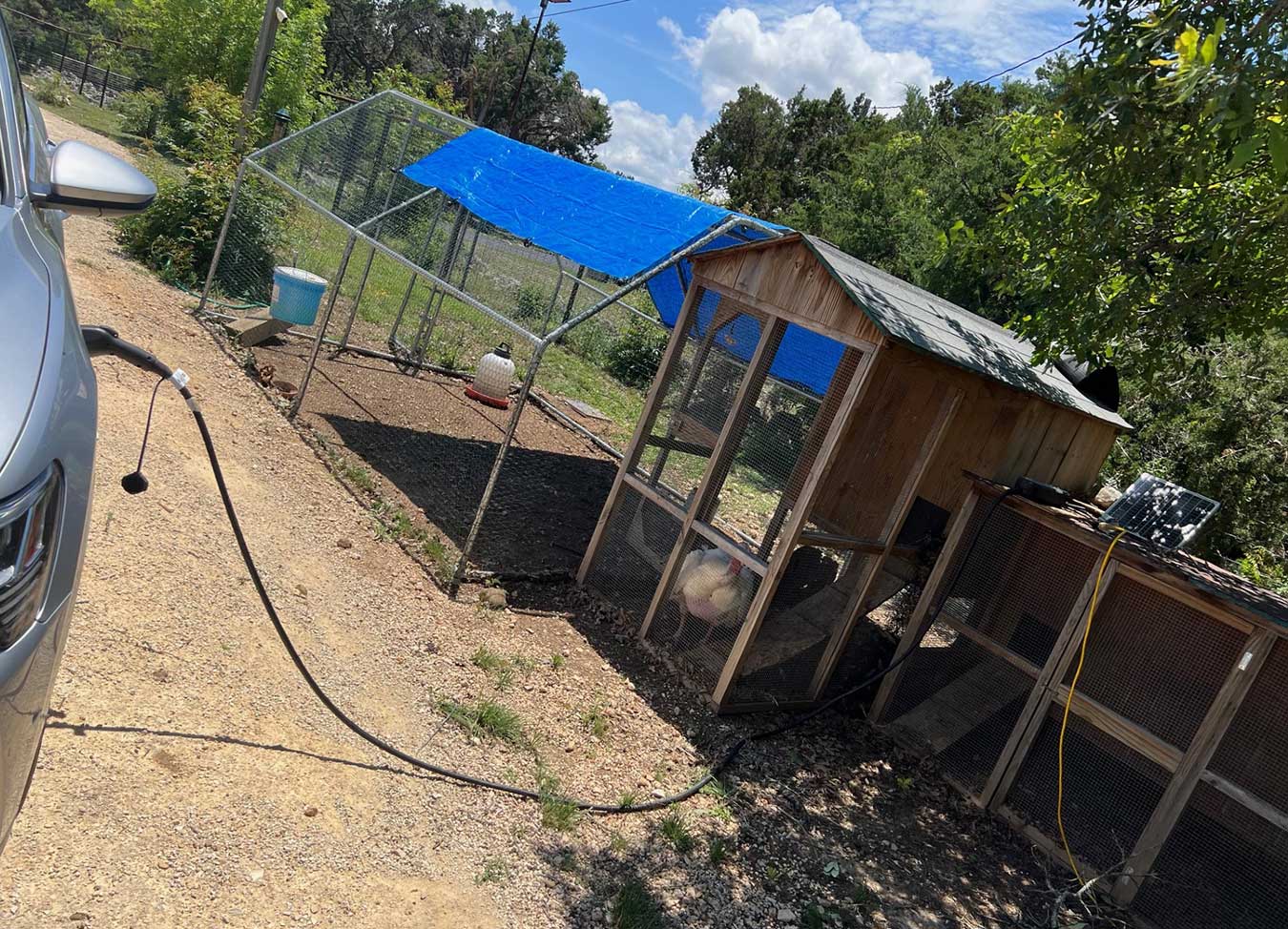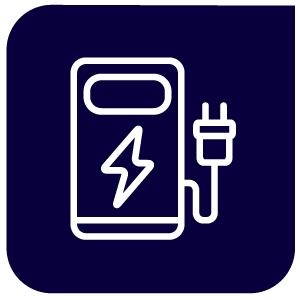
If you’ve been following along with my EV journey on this blog, mea culpa! I know I left you hanging for a while with my last blog post. What can I say…it’s been a couple of crazy-busy months. So, back to the chicken coop story.
When I first bought my EV, I was excited to switch to clean transportation but underestimated how much planning and preparation I needed to do. Like many new EV owners, I didn’t have a proper home charging solution set up when I drove my new car off the lot. So, when my battery started running low after a day of driving around town, I knew I had to get creative.
Not wanting to waste time finding a public charging station, I decided to run an extension cord from my home’s electrical panel out to the car. The only place long enough to reach was right over the top of my chicken coop! So that’s how my shiny new EV ended up plugged in next to my feathery friends for its first overnight charge.
While this unorthodox charging solution worked for that first day, I quickly realized it wasn’t a sustainable (pun intended) plan. The limited amperage from my household outlet combined with the length of the extension cord meant that charging took F-O-R-E-V-E-R! And when my husband also needed to drive somewhere the next day, we simply didn’t have enough range between charges to cover both of our driving needs.
The first thing the next morning, I called a local electrician to install a proper 240-volt, high-amperage charging station in our garage. The peace of mind of having a fast, reliable home charger is well worth the investment for any EV owner. And my chickens were happy to have their coop back!
The lesson here is that while it’s exciting to join the EV revolution, you have to plan ahead for how you’ll charge your EV. Don’t be like me and wait until you desperately need a charge before you figure out your charging solution. Take the time to understand your options and make sure you’re set up for home, workplace, and/or public charging before you hit the road electric.
Transitioning to a hybrid future
Now that I’ve sorted out my home charging situation, I’ve been following the latest EV industry news closely. One recent story that caught my interest highlighted the major shift happening with hybrid vehicles.
Hybrids that combine gas and electric power have been around for years, but recent high gas prices have automakers focusing more on plug-in hybrid electric vehicles (PHEVs). These PHEVs allow drivers to charge a larger battery from an outlet, giving them 20 to 50 miles of all-electric range before the gas engine kicks in.
For drivers who aren’t ready to go fully electric, PHEVs provide a nice transitional option. You can drive emissions-free for your regular short commuting and errands, while still having the gas backup for longer trips or emergencies. And charging at home is much cheaper than paying for gas, saving you money as well as lowering emissions.
Even some long-time holdouts like Toyota are now getting on board with PHEVs, announcing new plug-in versions of popular models like the Prius and noting that the top-selling car in the US will be hybrid-only. This shows that hybrids are likely to play an increasingly important role as we shift away from fossil fuel transportation. If you drive moderate daily mileage, PHEVs provide a way to take advantage of electric driving without having to suffer from range anxiety.
As more of these partially electrified options hit the market alongside longer-range EVs, they’ll help ease the transition to a cleaner transportation future. I for one am happy to see the auto industry responding to demand and giving drivers more choices. Just remember to install your high-voltage outlet before you end up having to charge off a chicken coop!
In case you missed the previous posts in this EV series, you can check them out here:
- I’m Not an EV Expert, But I Play One on TV
- Before You Buy an EV: The Research I Should Have Done
- Learning about Your New EV While Trying Not to Feel Stupid
- How I Ended Up Charging My EV on My Chicken Coop
E-mobily yours,
Bethany
EV and Convenience

Learn more about EV and convenience with new resources in the EV Hub.


